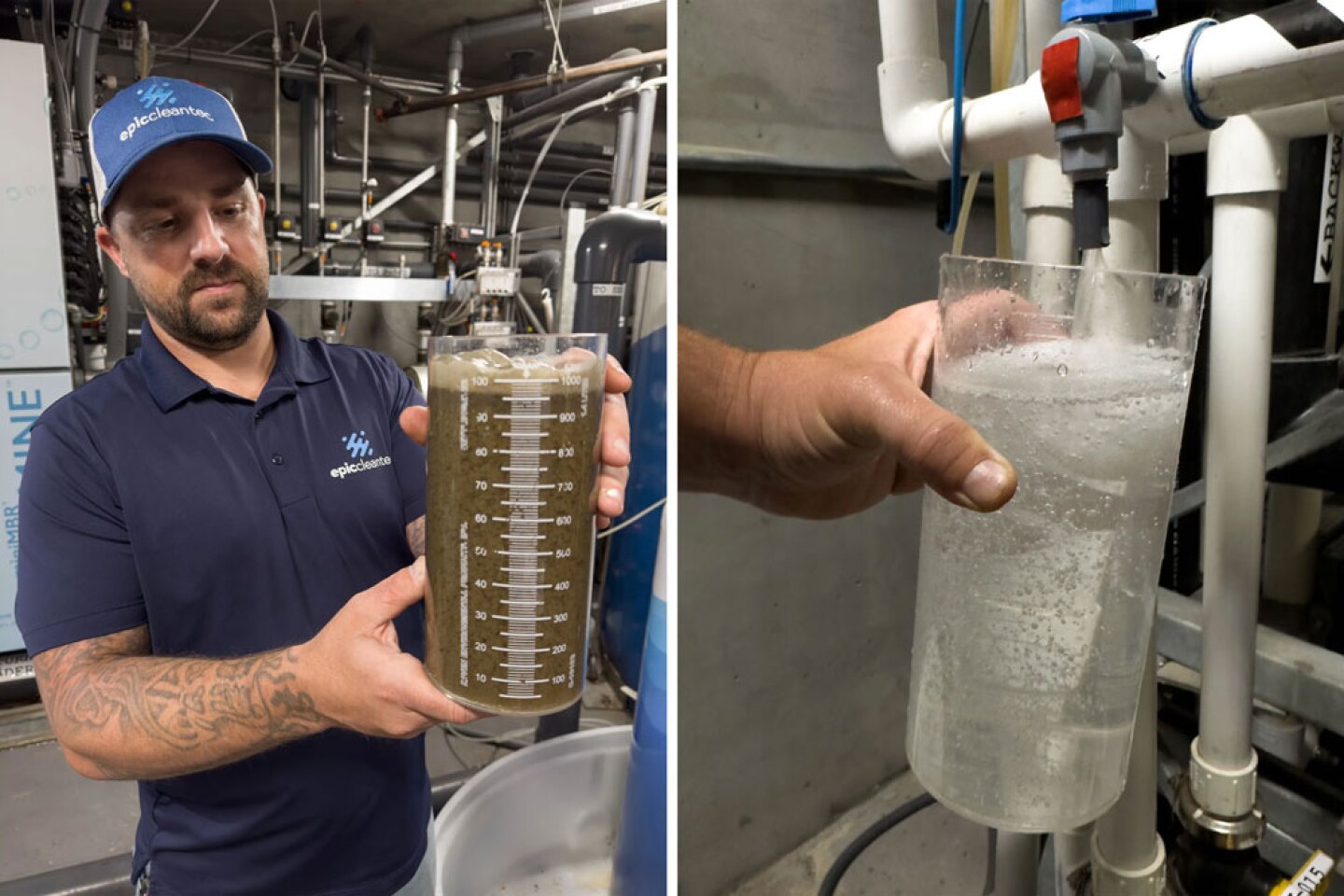For centuries, buildings around the world have relied on the same linear water model: bring in fresh water from far away, use it once, and flush it out of sight and mind. This approach, rooted in Roman aqueducts and 19th-century sewers, made modern cities possible. But today it’s buckling under rapid urbanization, climate volatility, and crumbling infrastructure.
Consider the numbers driving this shift. Water and sewer rates have surged more than 50 percent in the last decade, with annual increases of 5-15 percent and no signs of slowing. In many regions, water supply itself is constrained. Utilities are imposing restrictions, droughts are reshaping long-term availability, and developers are being told there simply isn’t enough water to serve new projects. And even when water is available, municipal wastewater systems often aren’t adequate to handle the extra load. Sewer hookups are delayed, treatment plants are at or over capacity, and cities are struggling to maintain pipes long past their design life.
Developers know these pressures firsthand: rising operating costs, uncertain access to supply, and projects held hostage by infrastructure bottlenecks. The real shift now is recognizing that the solution isn’t just coming from city hall—it’s happening inside the buildings themselves.
From passive cost to strategic advantage
Water has long been treated as a line item expense—just another rising bill—but onsite water reuse flips that script. Buildings are now able to capture, treat, and recycle their own water, dramatically cutting demand while simultaneously creating real financial, regulatory, and tenant advantages.
Water reuse systems are equivalent in scale to solar panels, battery storage, or EV chargers. These innovations didn’t replace the power grid—they made it stronger and more resilient while giving building owners a competitive edge. Recycling water is the next major logical step in the drive for long-term sustainability.
At Salesforce Tower in San Francisco—the tallest building on the West Coast—onsite recycling cuts water use by up to 76 percent. That’s hundreds of thousands of dollars in savings every year. For owners, that’s not just environmental goodwill—it’s net operating income and asset value.
Onsite reuse is both about using less fresh water upfront and sending away less wastewater on the back end. Water treatment infrastructure in the U.S. is under enormous stress, and the EPA estimates more than $270 billion is needed for upgrades. For developers, that stress shows up in the form of stalled permits, expensive tie-ins, and regulatory uncertainty.
New York City, for example, discharges more than 1.3 billion gallons (4.92 billion liters) of wastewater daily. More than 60 percent of its sewers are “combined,” meaning they carry both sewage and stormwater. Those pipes can back up and overflow during heavy rains, with ugly results: raw sewage flowing into the Hudson and East rivers, subway stations flooding, and regulatory headaches slowing down projects for months.
Onsite reuse can help relieve the pressure by treating water in the building and keeping it in a closed loop. Not only does it reduce demand for potable water, it cuts down on waste in the sewers. For a city like New York, it can mean fewer overflow events, fewer flooded subways, and fewer polluted rivers. For developers, it can mean projects that move forward instead of being stuck in limbo.
Following a proven playbook
The emerging trend in onsite water management has played out before in other sectors of the built environment:
- Energy: Rooftop solar and batteries reduce utility costs and provide backup power while helping meet decarbonization goals.
- Mobility: EV chargers, bike-share docks, and rideshare zones decentralize transportation at the building level.
- Waste: Composting, anaerobic digestion, and recycling reduce hauling costs and landfill dependence.
In every case, decentralization didn’t replace public infrastructure—it made it stronger. The same shift is happening with water. Early adopters aren’t just managing risk; they’re capturing opportunity.
Regulatory momentum
Not long ago, onsite water reuse was slowed by regulatory gray areas. Today, cities are creating clear pathways—and in many cases, outright mandates.
San Francisco now requires onsite reuse for new buildings over 100,000 square feet (9,290 sq m), a move projected to save 1.3 million gallons of potable water per day by 2040. Los Angeles, Austin, Seattle, Denver, Honolulu, and even New York are rolling out their own regulations and incentives. Nationally, the Blue Ribbon Commission on Onsite Water Systems is writing standardized codes that reduce uncertainty for developers.
Early movers on managing water usage in their buildings get faster approvals, easier financing, and access to incentive programs. Those who wait risk higher compliance costs, longer timelines, and projects that no longer pencil out.

Ryan Pulley, director of water reuse operations at Epic Cleantec, holds a beaker of treated wastewater known as gray water from a San Francisco apartment building. It’s cleaned to drinking water standards (right) and reused for the building’s toilets, laundry, and irrigation.
(Ted Wood/Epic Cleantec)
Tenants and investors are paying attention
Besides new regulations, tenants are also demanding greater sustainability in their building’s systems. According to commercial real estate firm CBRE, 77 percent of large occupiers actively seek out sustainability features such as water recycling. They want predictable utility costs, resilience during droughts or restrictions, and measurable ESG progress that they can report.
Investors are following suit. Water-smart buildings are better positioned for green bonds, sustainability-linked loans, and higher valuations in competitive markets. In an environment where tenants and investors are voting with their feet, water reuse has become a pivotal issue.
Looking ahead: implementation insights
Today’s water reuse systems are not the bulky prototypes of decades past. They’re compact, modular, and robust—often fitting in a single parking space while handling everything from bathrooms to rooftop stormwater. Advanced treatment makes water safe for nonpotable uses such as toilets, cooling towers, irrigation, and laundry. Cloud-based monitoring keeps operations simple and reliable.
The smartest projects plan for water reuse early, integrating with plumbing, HVAC, and landscaping from day one. Cities increasingly reward this approach with expedited approvals, density bonuses, or fee reductions. Payback periods range from just a few years to about a decade, depending on local rates and building usage.
Unlike many other sustainability features, water reuse delivers results that can be readily measured, reported, and marketed from the outset. It’s both a resilience strategy and a branding tool.
Future-proofing real estate
The trajectory is clear: water-smart buildings will outperform those that aren’t so equipped. Cities will keep raising water and sewer rates and tightening mandates. Tenants and investors will keep demanding measurable sustainability.
The wasteful, use-it-once water model of the past is ending. Properties that adapt early will capture the greatest financial, regulatory, and competitive rewards—and secure resilience for decades to come.






